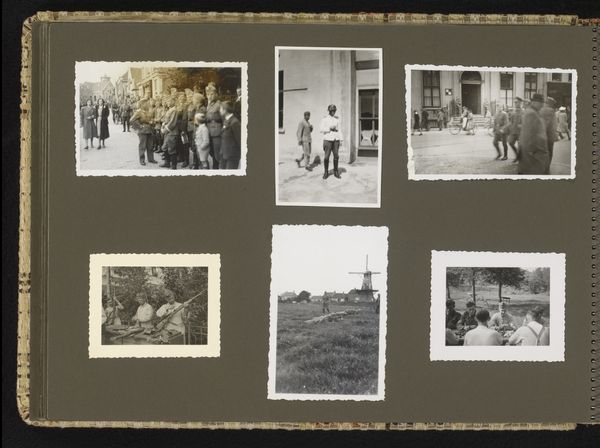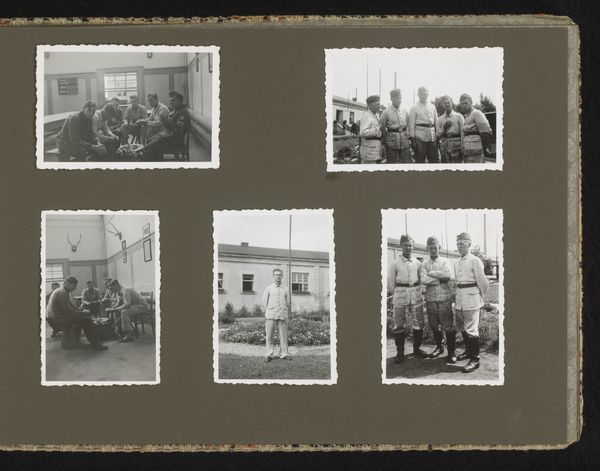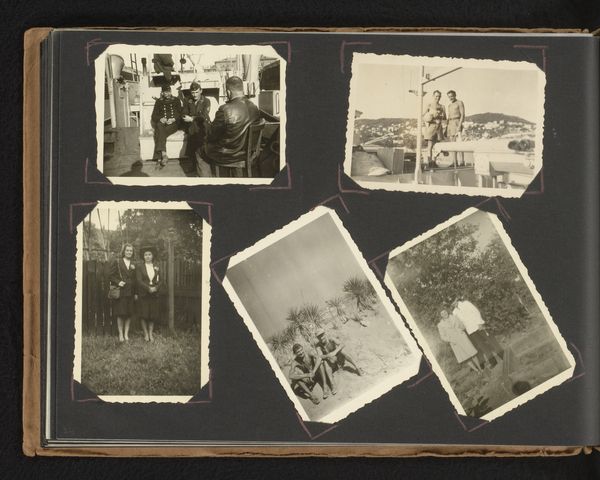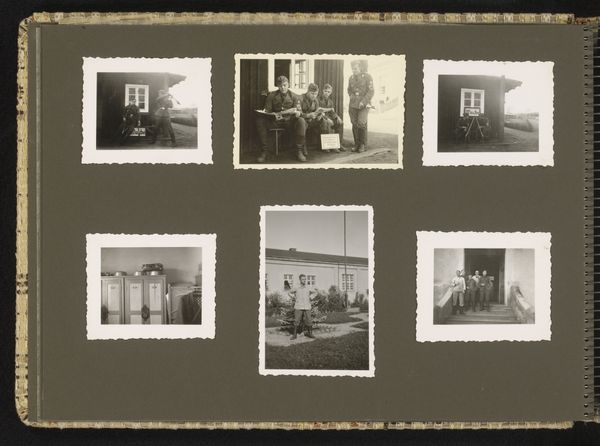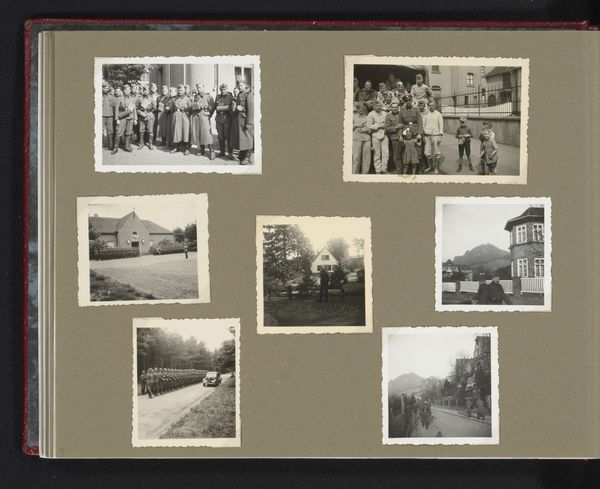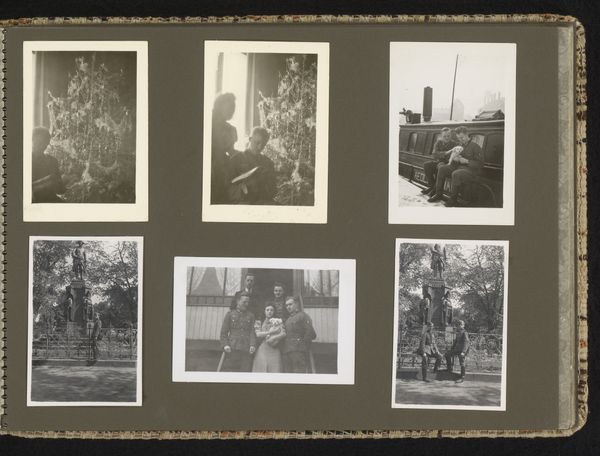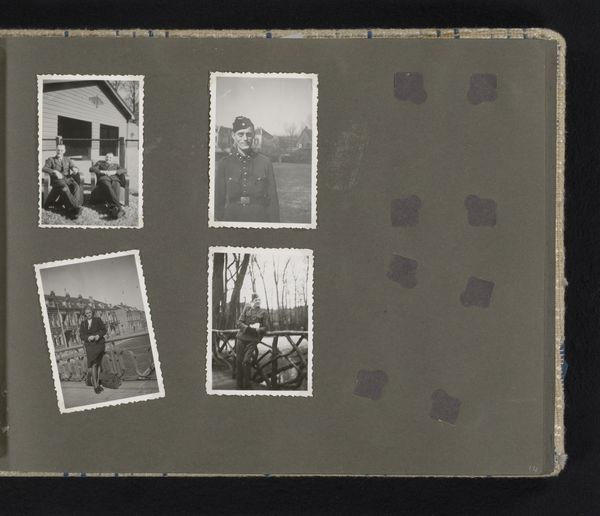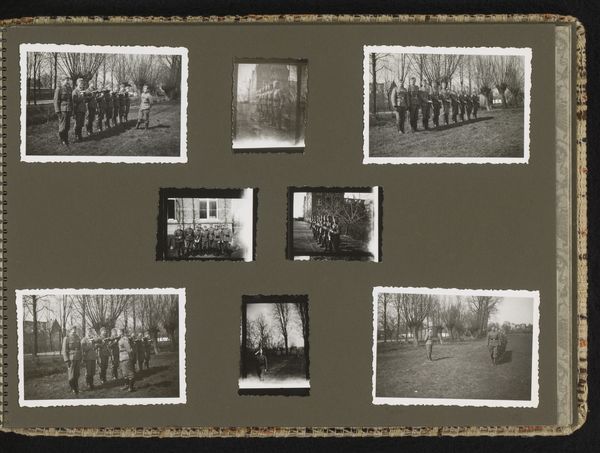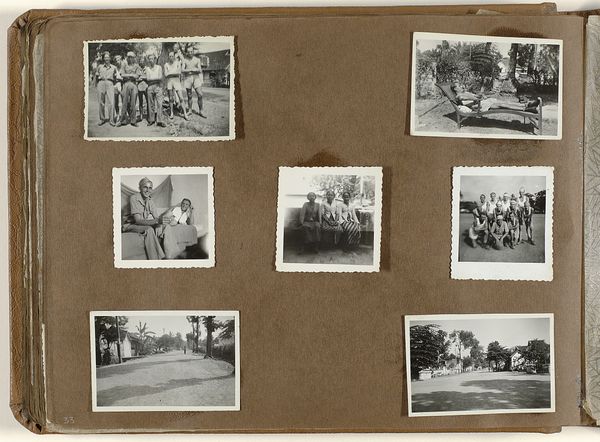
Dimensions: height 90 mm, width 60 mm, height 210 mm, width 290 mm
Copyright: Rijks Museum: Open Domain
Curator: Here we have a page from an anonymous photo album entitled, "Opleiding in de Reichsarbeitsdienst en militaire dienst," which translates to "Training in the Reich Labour Service and Military Service." The photographs were taken sometime between 1935 and 1940 and were made using the gelatin silver print process. Editor: What strikes me immediately is the mundane nature of these images paired with the knowledge of what was to come. There's a disturbing dissonance. Look at these young men posing, some shirtless, some holding accordions—completely unaware or perhaps choosing to ignore their roles in a horrifying future. Curator: Exactly. These images, carefully arranged within the album, reveal a curated presentation of early Nazi ideology focused on discipline and indoctrination. Look closely. We see the juxtaposition of labour service and military preparation. The photos oscillate between images of comradery and an inside glimpse of the preparation required by future soldiers. Editor: And the gelatin silver print process—the stark contrast, the sharpness. It almost lends an air of documentary realism. I find myself wondering about the role of photography in propagating these ideals, and who made these pictures, and how they were disseminated within their community. What kinds of beliefs were circulating in the labor force? Curator: That's a vital question. The materials here are fundamental in understanding how national identity was manufactured. Mass media and visual culture became instruments for ideological molding, presenting an idealized version of reality, which of course ignored what was going on beneath the surface of everyday life. This kind of visual merchandising bolstered their agenda in that time and context. Editor: It’s unnerving to see how effective seemingly innocuous photographs can be. It speaks volumes about the power of images and the regimes that control their production. The album format makes these snapshots incredibly personal, and I can't help but try and connect this to our lives, where digital devices produce constant images of a similarly curated reality. Curator: Absolutely. This object—a simple photo album—reveals profound truths about a period of profound unrest and challenges the distinction between "high" art and mass media. I believe by exploring that concept, it opens doors to asking questions and drawing new connections in relation to labor, nationalistic expression and its relation to personal liberty. Editor: For me, looking at the past can clarify where we are today. A look into the everyday of this era allows me to see both what was overlooked in the past and what is potentially glossed over in our society as well. It leaves me curious to look closer at the ways that art serves to manufacture ideologies that must be revealed to further understand our present.
Comments
No comments
Be the first to comment and join the conversation on the ultimate creative platform.

